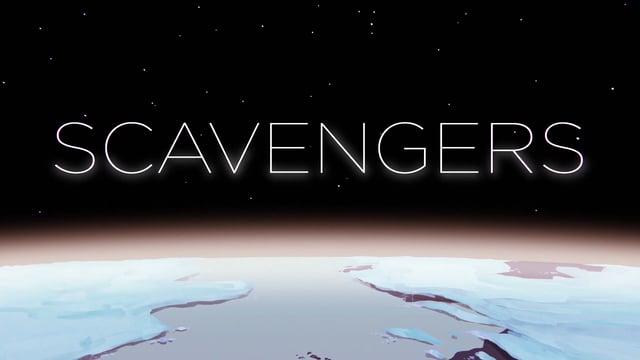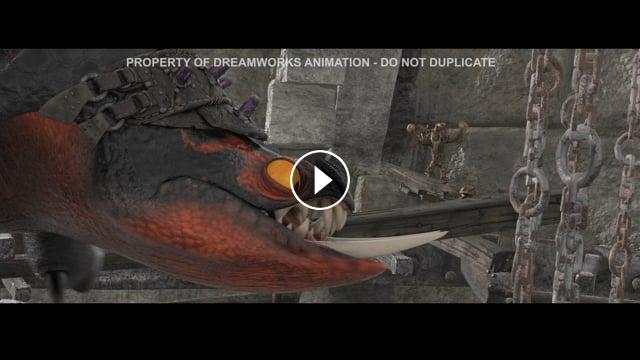A short video showcasing some of the face rigging work for Grimmel's deathgripper dragons in 'How to Train Your Dragon: The Hidden World.'
A note about the deathgripper rig:
There was only one deathgripper rig. All variations between the different individuals were designed in the animation department by the character lead, Liron Topaz. The six individual deathgrippers that show up in the movie were created entirely by using the existing rig controls to push and pull the characters into different designs.
Face Rig by Evan Boucher
Body Rig by Hongseo Park
Tusk Retract:
Concept:
Because of the curved shape of the tusks, they couldn't simply be retracted into the mouth by scaling them down. Before developing a rigging system, I wanted to first brainstorm how such a novel feature could possibly evolve in nature to help guide my implementation. The idea I came up with was the tusk tooth socket being open on the inside of the dentary bone, and connected to musculature stored behind the lower jaw (where most of the jaw-closing muscles are normally found in animals like crocodylians and dinosaurs). In order to provide leverage, I suggested the customized muscle originate on a modified and expanded hyoid bone, so when the muscle contracts it would pull the tooth into a specialized socket, which essentially runs the length of the entire lower jaw. The thinking was that taking the time for this speculative anatomy would help give more credibility to the creature's behavior, and would allow us to come up with some rich visuals by implying this anatomy underneath the creature's skin when the tusks retract.
Implementation:
The system uses a joint chain that slides along the UV of a simple curved surface. As the joints move into the gums, they are scaled and pushed out of the way so they don't poke out of the face at any point. This joint chain controls the final tusk, and is completely pose-able, so that animation could shape the teeth to cheat the silhouette when needed, or use the controls to create character variations. The tusk retraction blends off any posed offsets while retracting, so it would work without having to first reset all the tusk controls. The retraction also drives a shape on the tooth socket to close the gum, so it appears as if it's hugging the tooth. Finally, I worked with animation to define what controls on the face to use to make it appear as if there is musculature under the skin contracting to pull the tooth back and into the mouth.


